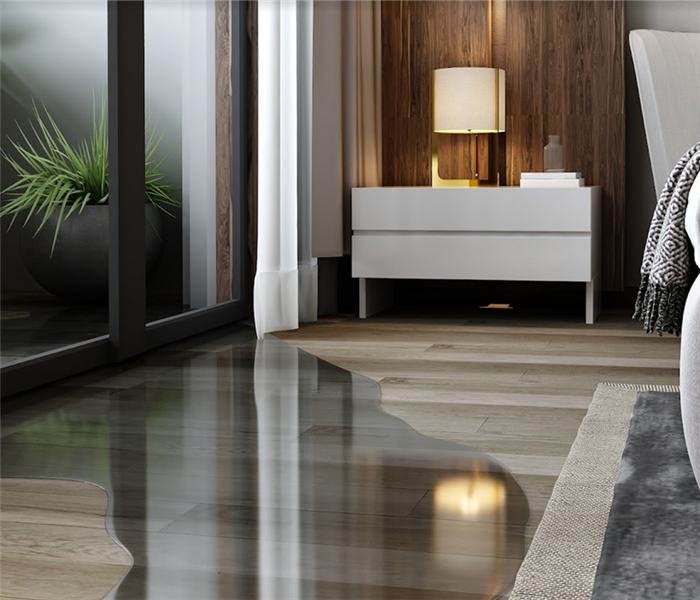What are the Steps Used to Dry Water Damage in Dallas?
6/5/2022 (Permalink)
 Excess water needs to be dealt with urgency before secondary damages take hold. Call our SERVPRO technicians to assess and remediate the water damage.
Excess water needs to be dealt with urgency before secondary damages take hold. Call our SERVPRO technicians to assess and remediate the water damage.
Professionals Discuss Water Removal Strategies in Dallas
Any time water floods out a building in Dallas, various types of problems can take place. If water cleanup operations are not conducted quickly, the damage created can get worse before you know it. When moisture comes into direct contact with your contents and building materials the problems caused are called primary issues. Once things inside your Dallas house get wet, humidity levels increase which means that water vapor can cause its own set of issues known as secondary damage.
Both primary and secondary problems can get worse if the water is not dealt with promptly. When moisture causes problems in Dallas, water cleanup technicians such as those at SERVPRO can reduce extensive damage in the future and help prevent mold growth. A fungus only needs 48 hours to develop once organic materials get wet. Therefore, it is vital to reduce moisture levels inside your home after a disaster occurs.
During every water damage restoration project, our SERVPRO technicians use two basic techniques to reduce moisture levels of building materials and contents. The first step is extraction where advanced equipment gets used to vacuum up moisture. The next and most vital process is the rapid structural drying phase. When trying to speed up the natural drying process, we manipulate the indoor environment by using advanced air moving and dehumidification devices.
These two systems both work together to create an environment that is ideal for drying building materials and contents as quickly as possible. Air movers get placed so that they push wet air away from damp surfaces so that more water can evaporate from the items to the air. The dehumidifier then sucks up the wet air inside the air movers' circular flow and pulls out the moisture, discarding it in liquid form.
When setting up air movers and dehumidifiers, it is vital that you have the right ratio of air movers per dehumidifier. However, determining this can often be tricky because every moisture damage situation is different. The number of air movers needed depends on how wet things got and what types of materials were affected. If you ever need assistance with removing moisture from wet building materials or contents, call SERVPRO of Southeast Dallas County at (972) 227-0800 any hour of the day or night.






 24/7 Emergency Service
24/7 Emergency Service